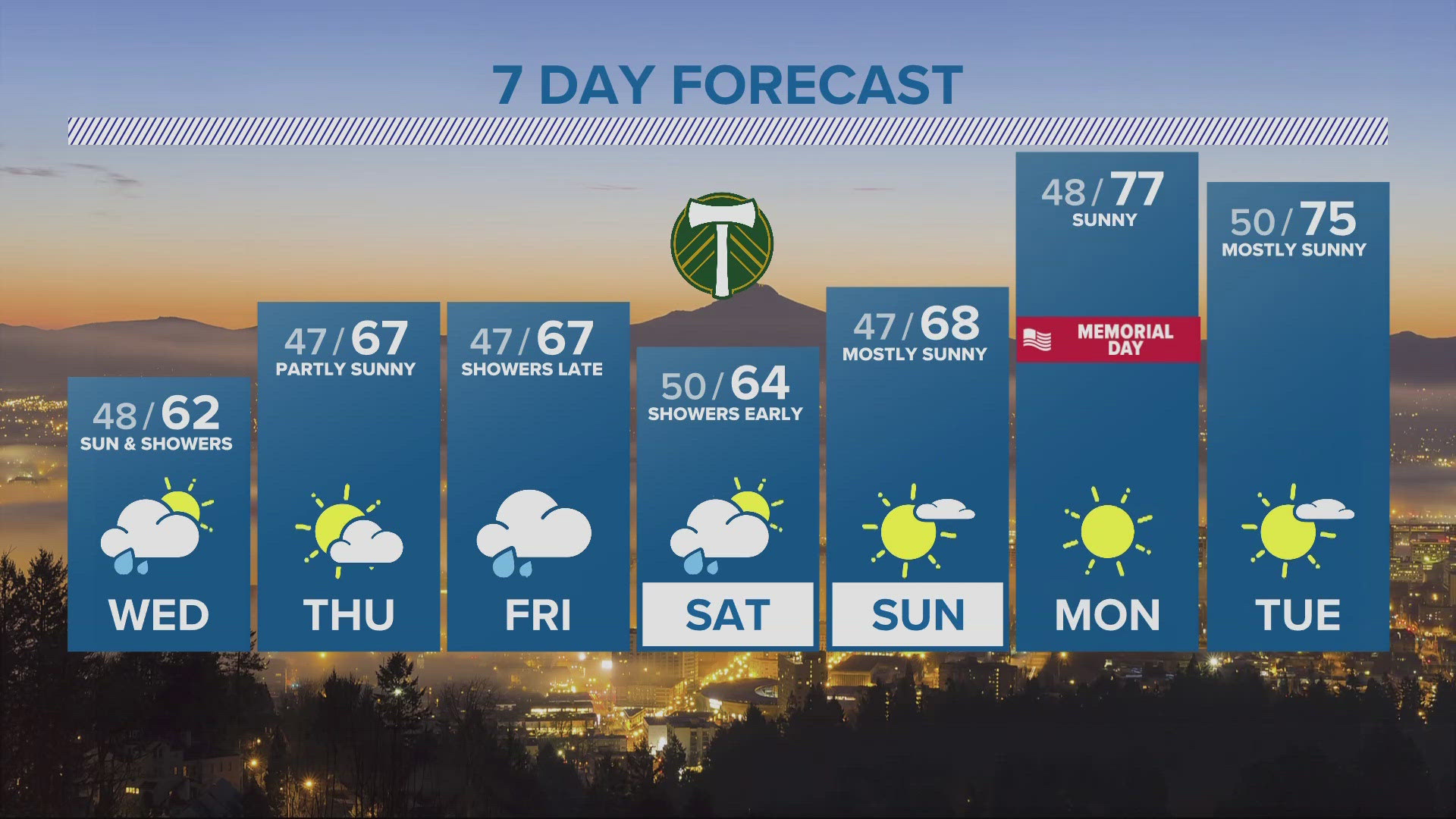PORTLAND, Ore. — Winter 2023-2024 in Oregon came with its share of notable weather events. Portland saw a warmer-than-normal December, an arctic blast in January that brought ice and freezing rain storms along with the coldest temperatures of the season, which were well below freezing.
With the official start of spring on March 19, KGW meteorologist Rod Hill looked back at the highlights of the El Niño winter season around Portland.
Temperatures
December: Portland saw its second warmest December since data was first recorded in 1940. Hill's Winter Outlook, published in November 2023, predicted that December would be four degrees above normal for the month. That prediction was on point, with Portland's average temperature hitting 4.5 degrees above normal. The high temperature was 51.4 degrees, which ties the record for the warmest month of December, set back in 1950. "December was the warmest month of the season in terms of a positive anomaly when compared to climate average," Hill said.
January: A series of winter storms hit Oregon in mid-January. Between Jan. 12-22, 11 days of arctic air, combined with east winds, held the monthly average down to 1.6 degrees colder than normal, Hill reported, defying the El Niño forecast. On the mornings of Jan. 13 and 14, Portland dropped down to 15 and 17 degrees, the coldest temperatures of the season.
February: Temperatures bounced back in February; the monthly average was 1.4 degrees warmer.
March: The month of March will likely finish with temperatures near or above normal, Hill said.
RELATED: Pipes burst at Oregon Humane Society, Portland metro-area businesses amid freezing temperatures
Precipitation
The wettest months of the season were December and January, recording 18.16 inches of total precipitation over a 62-day period, Hill reported. That's a surplus of 7.36 inches.
December: Portland saw 2.96 more inches of precipitation than normal, ending the month with 8.73 total inches. An atmospheric river from Dec. 4-6 brought a total of 3.16 inches of steady rain over 40 hours.
January: There was 9.43 total inches of rain in Portland, which Hill said is 4.40 inches more than normal. When it comes to snow, January's arctic blast led to the Rose City's only measurable snow of the season. Hill's Winter Outlook called for zero to three inches of total snowfall in Portland.
"My outlook showcased an El Niño-heightened chance for sleet or freezing rain but little snow," Hill said. "The outlook was correct as Jan. 13 in the Rose City saw mostly sleet mixed with 1.6 inches of total snow."
On Jan. 13, southwest Washington saw four to six inches of all snow, while a Blizzard Warning had six to eight inches of snow in the Columbia River Gorge.
A second event with all freezing rain came between Jan. 16 and 17. Portland saw 0.25 inches of ice, while Salem saw 0.5 inches, Hill said. The National Weather Service in Portland reported nearly an inch of total ice for the week.
February: Low snow levels near or below 1,000 feet on Feb. 26 and Feb. 29 brought a mix of snow showers. Feb. 29, or Leap Day, set a rain record with 1.10 inches at PDX.
March: The first four days of March, at times, saw low snow levels near or below 1,000 feet. PDX reported a trace of snow on March 2, while Sandy, Camas and West Linn saw snow on the ground at times. Meanwhile, the Oregon Coast Range at 2,000 feet elevation and higher saw 20-40 inches of snowfall, Hill said. A break in the cold started on March 8 with temperatures starting to warm up, Hill said.
RELATED: Multnomah County reports highest number of 'slip-and-fall' ER visits in a single day since 2016
Snowpack levels
Oregon saw a slow start to the snowpack season. Skiers and snowboarders may remember the lack of snow over the Christmas holiday. Hill's Winter Outlook projected virtually no snow on the ground at Government Camp over Christmas week, "which was sadly proven correct," he said.
Cold temperatures in January brought a surge in snowfall on Mount Hood. To date, the snowpack stands at 86% of normal, according to Hill, with more than 130 inches of snow on the ground at 5,400 feet.
"My projection calls for 74% of normal snowpack when the final measurement is taken April 30," Hill said.
Snowpack season ends May 1.



